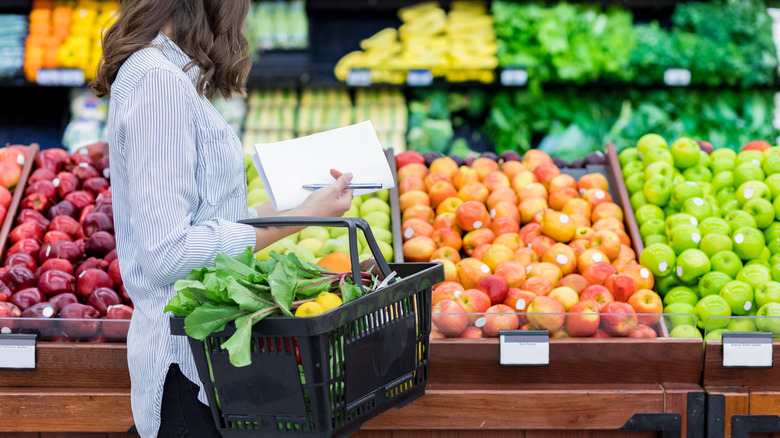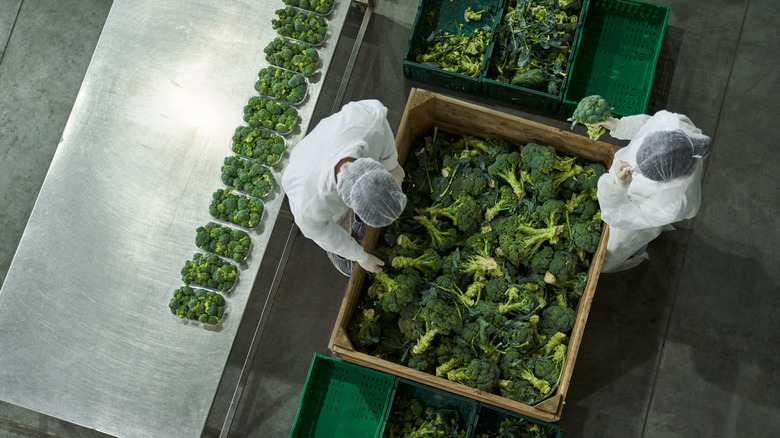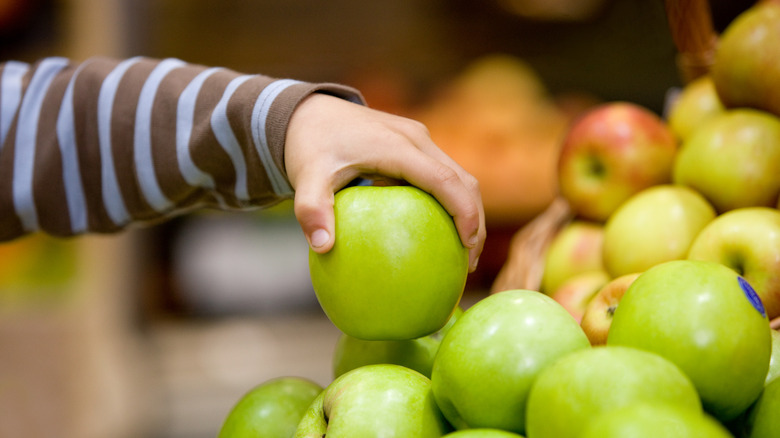Why You Shouldn't Buy Grocery Store Produce In The Middle Of The Day
We've all been there before: You have a list of all the fruits and vegetables you want to pick up at the grocery store, but when you get to the produce section, it's slim pickings. Whether it's bruised tomatoes or bananas that look like they're about to turn brown, produce that has clearly been sitting out for several days isn't exactly ideal. If this often happens to you, you might want to rethink when you go to the store because produce tends to be the least fresh in the middle of the day.
Grocery stores usually receive deliveries of fresh produce first thing in the morning or just before closing time. If you want first dibs on the newly restocked fruits and veggies, your best bet is to avoid the middle of the day, especially if it's a Sunday. On Sundays, grocery stores see the most foot traffic, and that means the produce will typically be more depleted and excessively handled compared to any other day of the week.
Some stores have different delivery schedules
Saving your grocery shopping for the morning or evening isn't a guarantee that you'll have access to the freshest produce. While most major chains restock their selection every day twice a day, smaller stores don't always find it necessary and instead only do so twice a week often on Tuesdays and Fridays (per InstaCart). If a store's produce isn't restocked daily, Mondays will generally have a poor produce selection due to the Sunday rush.
To determine when the fresh produce gets delivered to your local grocery store, don't worry about doing any guesswork. An employee will gladly tell you if you just ask. If, however, you're unable to make it to the store at its scheduled restock time, the good news is there's still a way to spot the freshest produce aside from appearance and feel alone. The later the expiration date, the further back on the shelf it'll be placed, so try to grab produce from the back if you can.
The produce isn't always as fresh as you think
If you think newly restocked produce is guaranteed to be at peak freshness, think again; unfortunately, that's not always the case. Just because it's fresh off the truck doesn't mean it's freshly picked. To ensure a steady supply of produce available at grocery stores even during the off-season, produce sellers keep fruits and vegetables preserved (sometimes for many months) in controlled-atmosphere storage, according to Science Direct. Controlled-atmosphere storage, a technology developed by Michigan State University researchers, extends the shelf life of produce by keeping the humidity, temperature, nitrogen, carbon dioxide, and oxygen at precise levels (per USA Today).
When apples are picked in the late summer and fall, for example, they can be stored for several extra months before they get to the grocery store. This allows the fruit to be sold through the winter when it's off-season in the United States. Grocers also rely on harvests from around the world when the spring and early summer roll around. In order to get the freshest possible local produce, your best bet is to shop during restock hours and buy according to what's currently in season.


